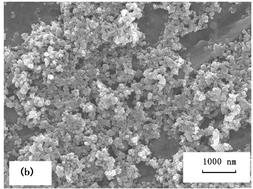Characterization of the stability of ceramic suspension for slurry introduction in inductively coupled plasma optical emission spectrometry (ICP-OES) and its application to the analysis of aluminium nitride (AlN) was reported in this paper. Stability and homogeneity suspensions of μm sized AlN and nm sized AlN, as the representatives selected, were characterized by sedimentation test, scanning electron microscope observation and zeta potential measurement. The zeta potential of the interface between the particle and the medium can be controlled by pH adjustment and adding 0.8 wt% polyethylene imine (PEI) for μm size AlN or 2.0 wt% PEI for nm size AlN, respectively. The analytical results obtained via slurry introduction were compared with those via nebulization of aqueous solutions prepared by fusion digestion. The nm size AlN can be directly analyzed by using slurry nebulization ICP-OES with aqueous standards calibration, and the impurities Cu, Fe, Mg, Mn, etc. in μm size AlN can also be determined by slurry method, but the results of some elements with high boiling points, such as Si, Y, etc., show deviation from the reference values.

You have access to this article
 Please wait while we load your content...
Something went wrong. Try again?
Please wait while we load your content...
Something went wrong. Try again?


 Please wait while we load your content...
Please wait while we load your content...